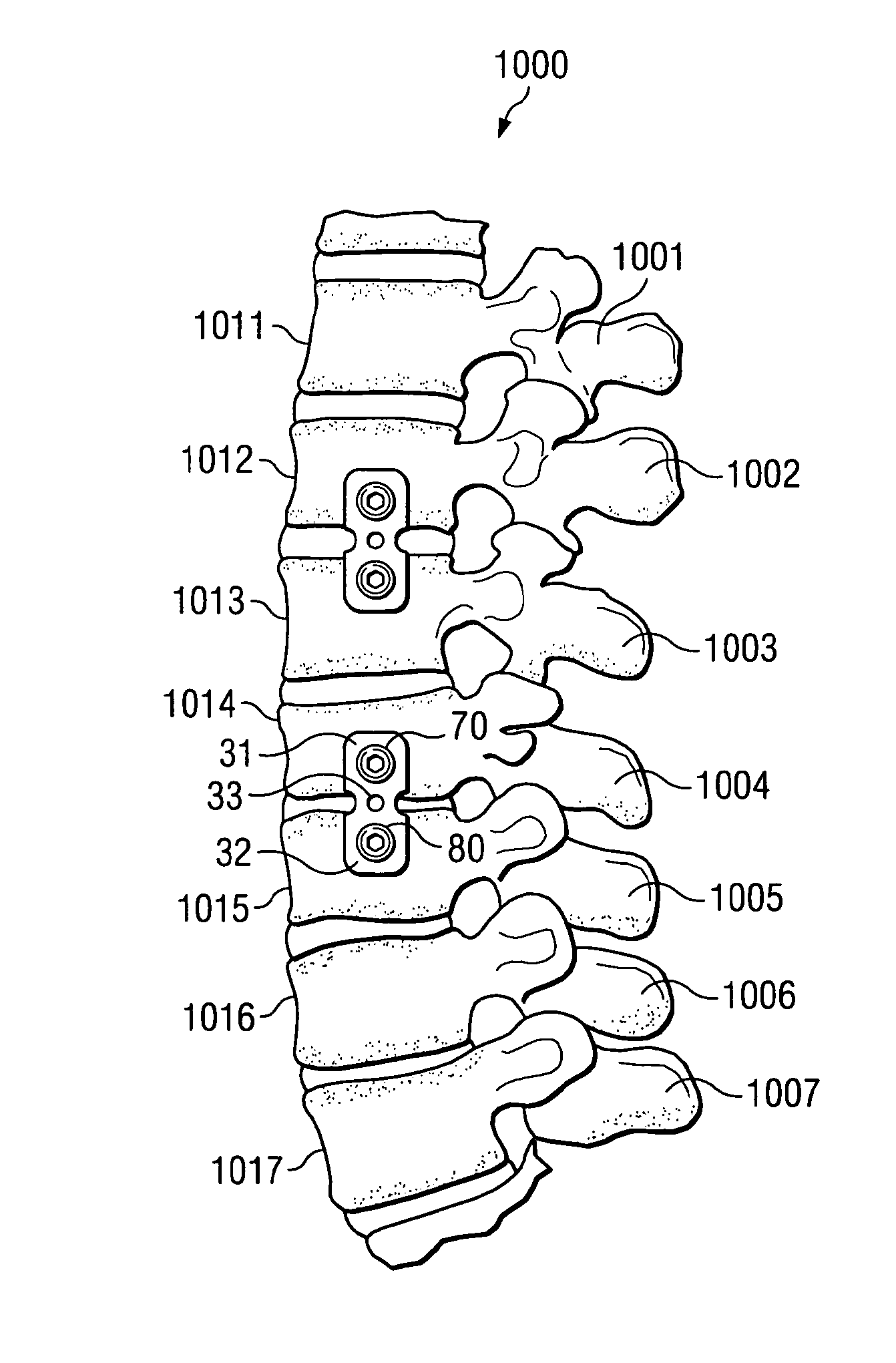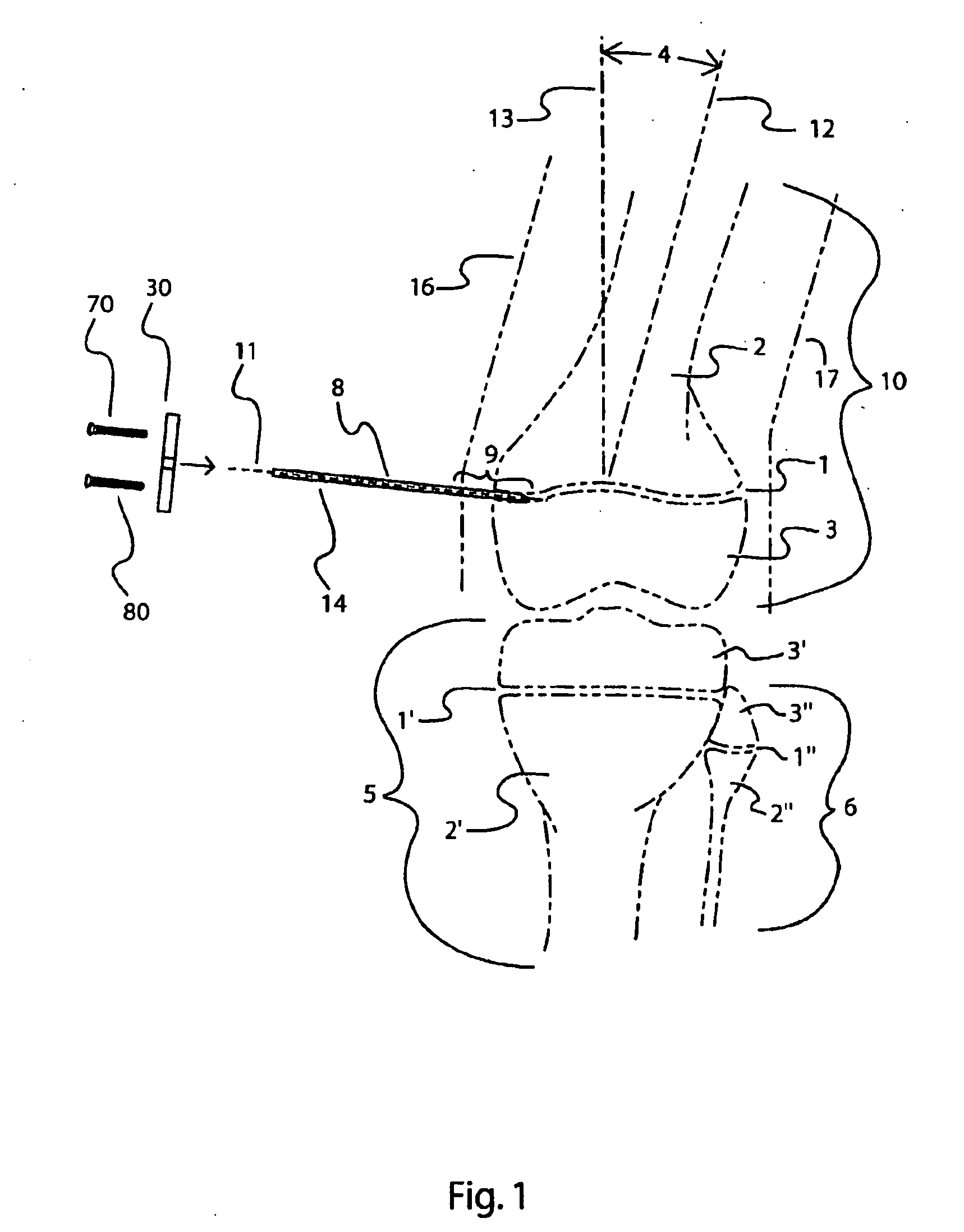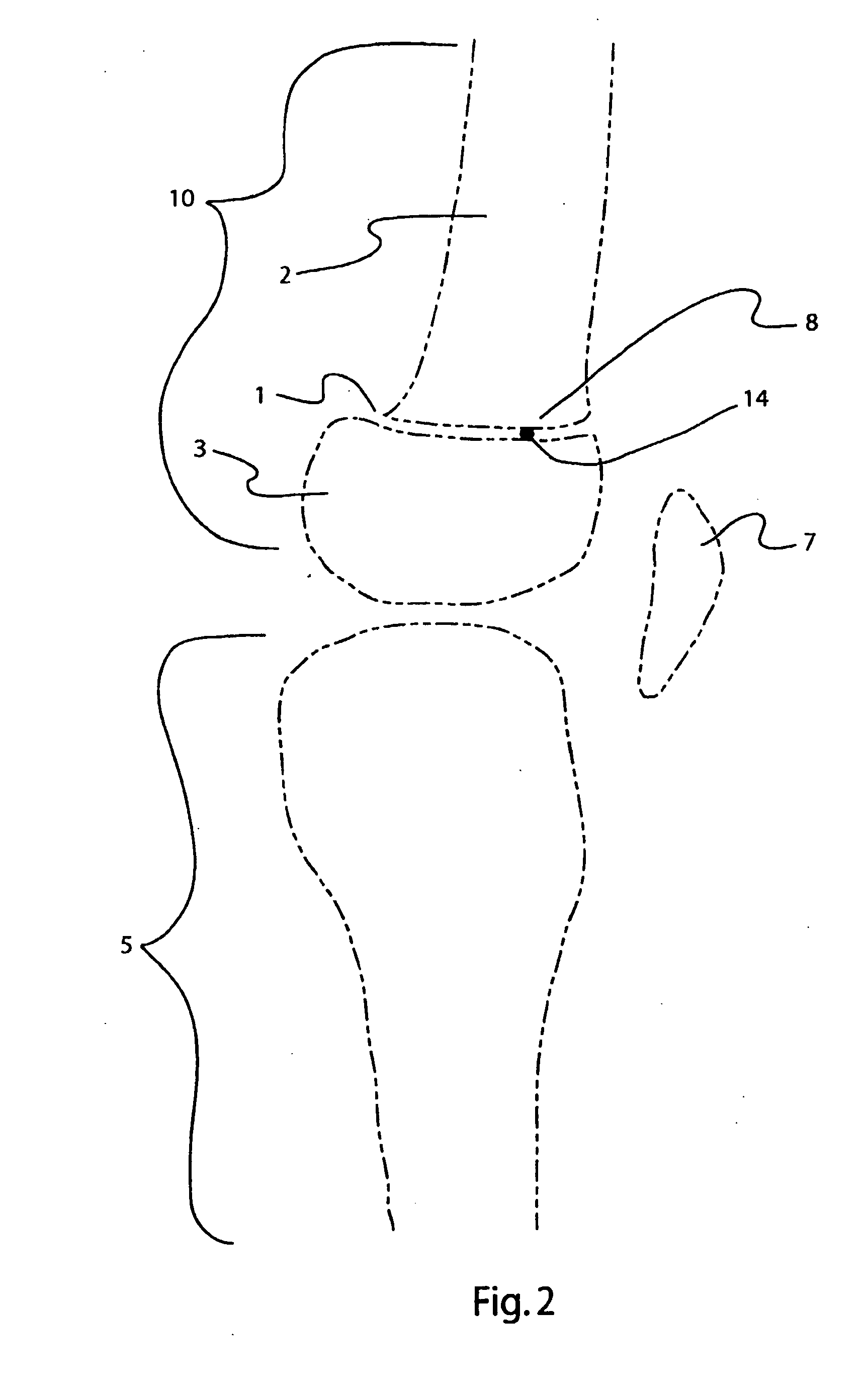Bone alignment implant and method of use
a bone alignment and implant technology, applied in bone drill guides, medical science, surgery, etc., can solve the problems of deformation of the limb and biomechanical abnormalities, disruption of healthy limb growth, and risk to the neurovascular structure, so as to reduce the chance of damage to the physis and constrain the volume of bone growth
- Summary
- Abstract
- Description
- Claims
- Application Information
AI Technical Summary
Benefits of technology
Problems solved by technology
Method used
Image
Examples
Embodiment Construction
[0081]Referring to FIG. 1, a schematic anterior view of the human knee joint is depicted in which a distal femur 10 is proximal to a proximal tibia 5 and a proximal fibula 6. A distal femoral physis 1, or growth plate, separates a distal metaphyseal section 3 from a proximal diaphyseal section 2 of the distal femur 10 Likewise a proximal tibial physis 1′ separates a proximal metaphyseal section 3′ from a diaphyseal section 2′ of the proximal tibia 5 and a proximal fibula physis 1″ separates a proximal metaphyseal section 3″ of a proximal fibula 6 from a diaphyseal section 2″ of the proximal fibula 6. Although the invention described herein is adaptable to nearly all of the long bones in the body, only the example of correcting one type of an angular deformity in the distal femur will be described in detail. The principles described herein can be adapted to other deformities and other bones such as the tibia, fibula, humerus, radius and ulna.
[0082]By example, an angular deformity 4 i...
PUM
 Login to View More
Login to View More Abstract
Description
Claims
Application Information
 Login to View More
Login to View More - R&D
- Intellectual Property
- Life Sciences
- Materials
- Tech Scout
- Unparalleled Data Quality
- Higher Quality Content
- 60% Fewer Hallucinations
Browse by: Latest US Patents, China's latest patents, Technical Efficacy Thesaurus, Application Domain, Technology Topic, Popular Technical Reports.
© 2025 PatSnap. All rights reserved.Legal|Privacy policy|Modern Slavery Act Transparency Statement|Sitemap|About US| Contact US: help@patsnap.com



